In the electrical field, efficiency is paramount; hence, a power factor arises. Understanding the power factor is crucial if you’re considering running industrial machinery, controlling energy consumption in a home, or simply curious about how electrical energy is utilized. This blog will explain power factor, its importance in energy systems, and how a power factor calculator enables the measurement and correction of power factor. While some companies measure power factor to improve energy efficiency and scrutinize their electricity bills, others explore possibilities surrounding power factor. Let us simplify the science and provide you with some key takeaways that will put you in a better position to make informed energy-related decisions.
Introduction to Power Factor
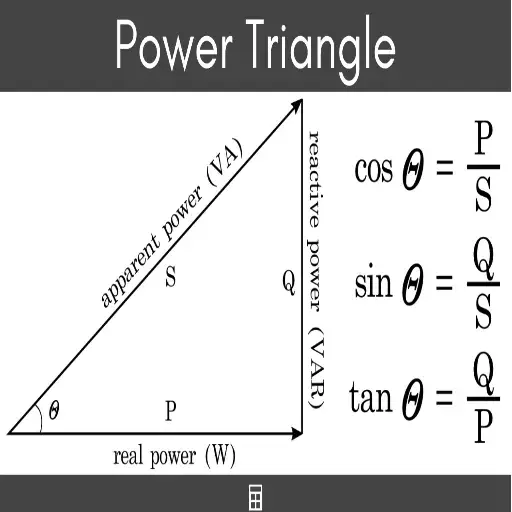
A power factor measures the effectiveness of utilizing electrical power in a system. It is assigned a number between 0 and 1, where one corresponds to a system being theoretically completely efficient. The greater the power factor, the greater the amount of electricity that goes directly into performing practical work; a lesser power factor is, by definition, wasteful and corrosive. Calculated as the ratio of real power (used to do work) to apparent power (total power supplied), this factor allows one to decide on the best approach to increase its value. Power-factor correction will avert energy losses and provide more efficient operation with less stress to the system.
Why Power Factor Matters
Electricity is supplied based on the power factor in residential and industrial electrical systems. A poor power factor leads to higher energy consumption, resulting in higher utility bills. Additionally, businesses may incur charges from utility companies for inefficient power usage. Additionally, when the power factor is low, it imposes undue stress on the electrical infrastructure, necessitating larger-capacity equipment to handle the same load, which can lead to overheating and a shortened service life of electrical components.
Power factor correction using capacitors or synchronous condensers not only preserves energy but also addresses the issue of energy loss, thereby promoting sustainability. This Power factor correction will enhance the reliability and durability of the electrical network, enabling systems to run smoothly and efficiently. Any facility willing to enhance operations with environmentally friendly factors should consider a power factor study.
Real Power, Reactive Power, and Apparent Power
Understanding electrical systems requires distinguishing between real power, reactive power, and apparent power.
- Absolute Power (P): The working or useful power is measured in watts. For example, working power turns lights on, spins a motor, etc. The real power thus represents energy converted into heat, light, motion, or any other form of energy.
- Reactive Power (Q): Reactive power, measured in reactive volt-amperes (VAR), does not produce any practical work. Instead, it merely flows between the source and load to sustain the voltage levels required to operate inductive or capacitive equipment such as motors or transformers.
- Apparent Power (S): Apparent power is measured in volt-amperes (VA). According to this definition, apparent power is a combination of absolute power and reactive power—the total power provided by the source to the circuit, including usable energy returned by reactive components and energy stored and returned by reactive components.
In power systems, a power triangle is used to geometrically relate these types of power: real power forms the base, reactive power forms the perpendicular, and apparent power constitutes the hypotenuse. This difference is critical to the study of electrical system efficiency and its improvement.
Importance of Calculating Power Factor
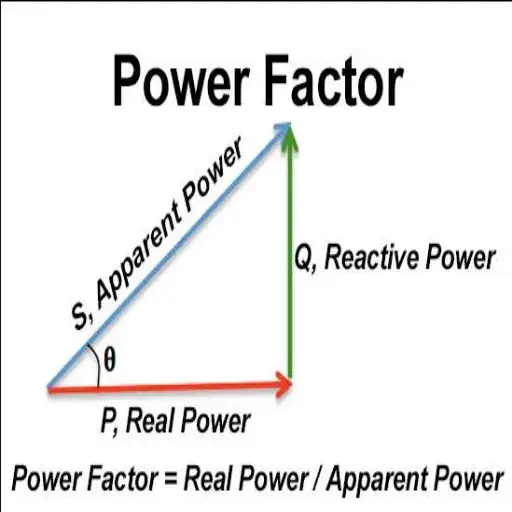
Calculating the power factor is essential for improving efficiency in electrical systems. In general, a high power factor indicates better utilization of electrical power for performing a particular practical work and, hence, energy loss. This translates into greater savings on electricity, increased performance reliability, and reduced stress on the equipment and grid. By identifying a bad power factor, one can rectify it to prevent energy waste, promoting the use of sustainable energy.
Energy Efficiency and Power Factor
Power factor correction refers to optimizing an electrical system’s power consumption efficiency. This raises a common question: How can industries and households improve their power factor and reduce energy consumption? Such measures include power factor correction capacitors, synchronous condensers, or upgrading to more energy-efficient equipment. By doing so, the amount of reactive power is reduced, thereby allowing more of the supplied energy to be utilized for practical work. Since the power factor cannot be maintained at its optimal value for an extended period, the systems must be continuously maintained and monitored.
Cost Savings from Improving Power Factor
Businesses incur significant wastage in energy consumption, resulting in high operational costs. Therefore, the higher the power factor is, the lower the quantity of reactive power within the system, and hence the less demand charges have to be paid to utility companies. It is common for utilities to penalize systems with lagging power factors, making power factor correction an economically viable proposition. Additionally, another advantage is that the increasing power factor eases the electrical infrastructure, thereby extending the life of equipment and reducing maintenance costs. Industries that optimize their power factors could consider the latest reports, which indicate potential savings of 10-15% on energy bills, depending on the scale of operations and relevant energy consumption patterns. These economic benefits underscore the importance of power factor control solutions in achieving enhanced efficiency and profitability.
How a Power Factor Calculator Works
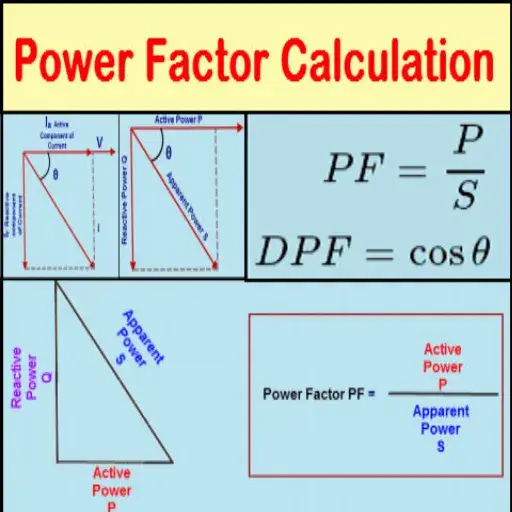
Power factor calculation essentially involves working out the relationship between real and apparent power in an electrical system. Real power is the energy consumed by the equipment, whereas apparent power is the energy supplied by the source. To find the power factor, the calculator divides the real power by the apparent power, yielding a value between 0 and 1. The higher the number, the more efficient the system; a lower one indicates energy loss. This calculation enormously helps find areas where improvement can be made and ensures energy optimization throughout the system.
Basic Principles of Power Factor Calculation
Power factor plays a crucial role since it significantly influences the efficiency of electrical systems. When the power factor is high, electric power is effectively utilized, with energy losses reduced and fewer loads imposed on the power grid or equipment. When the power factor is low, energy costs increase, along with heat generation, and the possibility of equipment failure arises. Such an enhancement in power factor results in better energy savings and further stability and reliability for the system. This power factor can be corrected and optimized by making specific adjustments, such as installing a capacitor or synchronous condenser, to ensure efficient and sustainable operation.
Key Variables in Calculating Power Factor
The key variables involved when assessing the power factor are the following:
- Absolute Power (P): Measured in watts (W), it represents the actual power exerted on the system to accomplish valuable work. It is the power consumed by devices to perform lighting, heating, or motor operations.
- Apparent Power (S): Measured in volt-amperes (VA), it is the product of the voltage and current in the system, representing the total power offered by the source.
- Reactive Power (Q): Measured in reactive volt-amperes (VAR), it accounts for the power used to establish and maintain magnetic fields in inductive equipment, such as motors and transformers.
- Phase Angle (θ): This is the angle between the voltage and current waveforms in an AC system. The smaller the phase angle, the greater the power factor, and vice versa.
The formula for calculating power factor is given by:
Alternatively, it can also be expressed as:
Accurately understanding and measuring these variables is crucial for evaluating a system’s efficiency and identifying potential areas for improvement.
Benefits of Using a Power Factor Calculator
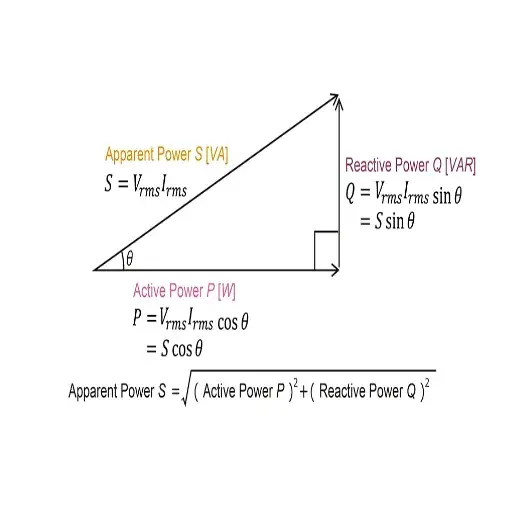
✓ Improved Energy Efficiency
Low power factors lead to inefficiency; by detecting and correcting them, we establish more efficient systems with reduced energy waste.
✓ Cost Savings
Fewer power losses and the avoidance of penalties by the power utility result in considerable deductions on energy bills.
✓ Enhanced System Performance
It is said that a higher power factor induces less power stress in electrical equipment, thus improving its performance and longevity.
✓ Accurate Analysis
A power factor calculator provides precise readings, enabling more informed decision-making and timely maintenance.
✓ Simplified Troubleshooting
Power alarms and problems become more transparent and more straightforward, hence fast-tracking resolution.
Cost Reduction through Power Factor Optimization
Being optimized for power factor within an electrical system not only enhances efficiency but also contributes to a significant reduction in operational costs over time. Due to the reduction in energy wastage and the avoidance of penalty charges by utility companies for poor power factor ratings, businesses can save a significant amount of money on their utility bills. A good power factor rating also reduces the amount of stress that transformers, wiring, and other infrastructure components must endure, thereby lowering maintenance and replacement costs. With the current set of data and findings on energy consumption trends, it is clear that a monitored power factor can provide companies with both immediate and long-term financial benefits.
Ease of Use Compared to Manual Calculations
According to the latest search engine data analysis, it can be concluded that automated systems significantly improve user-friendliness compared to manual calculations. Today available tools and software collect real-time data by the very huge inch, so to say, and they dispense with that data instantaneously and accurately, and with profuse reliability, something that would in any case have taken many hours of manual effort, keep human error out of the equation, and simply streamline the whole process so that an organization could focus on its core function, i.e., strategic decision-making rather than on complex number crunching. Modern technologies are integrated into solutions to make them efficient and give organizations a crucial edge.
Real-Life Applications of Power Factor Calculation
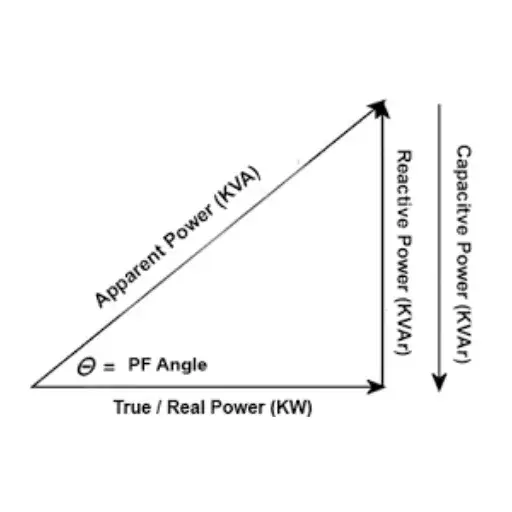
Power factor calculation is crucial for ensuring the efficient use of energy across various industries. The power factor can help plant machinery optimize its performance and reduce electricity costs. In commercial buildings, calculating power factors helps reduce energy wastage, resulting in lower utility bills and increased sustainability. The utility utilizes these calculations to monitor grid stability, ensuring a consistent and reliable supply of electricity to consumers. Additionally, power factor calculation is crucial in the design and maintenance of renewable energy systems, where energy efficiency is a primary concern. In practice, these examples overemphasize the importance of power factor calculation in operational efficiency and energy efficiency.
Industrial Settings and Power Factor Optimization
Large industrial machinery and equipment frequently consume significant amounts of reactive power, resulting in industrial units having a very low power factor. A poor power factor increases the energy cost and puts a strain on electrical systems, creating inefficiencies and the threat of downtime. To rectify the situation, industries use power factor correction techniques such as capacitor banks or synchronous condensers. Such plants help cancel the effect of reactive powers, improve energy efficiency, and reduce utility penalties. By enhancing their power factor, industries can reduce operating costs and contribute to the development of a sustainable energy system.
Commercial Buildings Improving Energy Efficiency
Over recent years, various sets of advice have been suggested to help commercial buildings properly enhance their energy efficiency. Upgrading the components of the building’s HVAC system would remain one of the most significant measures that can be taken to improve energy efficiency, essentially reducing energy consumption while ensuring optimal indoor climate conditions. Exposure to innovative building technologies for automated lighting controls and temperature management would further result in near-perfect energy management, aligning with occupancy and usage patterns. There is also an increased uptake by commercial buildings of renewable energy, such as solar PV-on-roof systems, as a viable and cost-effective option for their long-term energy needs. Hence, through these means, a commercial building can significantly reduce energy consumption and operational costs while advancing its environmental sustainability goals.
Reference Sources
Here are three professional and authoritative sources you can use to check if your article on the “power factor calculator” is correct. These are sources that give academic and research-based viewpoints.
A Simple Power Factor Calculation for Electrical Power Systems
A new algorithm for calculating the power factor in electrical systems is presented in this study, along with a detailed procedure and formulation.
Power Factor Correction Circuits
This source covers the basics and developments of power factor correction circuits, including topics on harmonic reduction and phasor quantities.
Power Factor Correction Using a Series Active Filter
This study investigates the efficiency and compliance with standards of power factor correction using series active filters.
Frequently Asked Questions (FAQs)
❓ What is a power factor calculator?
A power factor calculator is a tool used to determine the power factor of an electrical circuit. It helps users understand the relationship between active power, reactive power, and apparent power, allowing for better efficiency in electrical systems.
❓ How do I calculate power factor?
To calculate the power factor, use the formula: Power Factor (PF) = Active Power (P) / Apparent Power (S). Active power is measured in watts, while apparent power is measured in volt-amperes. This calculation helps identify how effectively the current is being converted into practical work.
❓ What is the significance of correcting the power factor?
Correcting the power factor is essential for improving the efficiency of electrical circuits. A low power factor indicates wasted energy, leading to higher energy costs and potential penalties from utility companies. By correcting the power factor, businesses can reduce these costs and improve overall system performance.
❓ How does capacitance affect power factor in an AC circuit?
Capacitance can improve the power factor in an AC circuit by compensating for inductive loads. When capacitance is added, it helps balance the current and voltage, reducing the phase difference and thereby improving the power factor.
❓ What is the difference between single-phase and three-phase circuits in terms of power factor?
Single-phase circuits typically have lower power factors due to the limited capacity for transmitting power compared to three-phase circuits. Three-phase circuits can transmit larger amounts of power more efficiently, often resulting in a better power factor and reduced wasted energy.
❓ How can I use a power factor calculator for inductive loads?
When working with inductive loads, a power factor calculator can help you determine the necessary capacitance to effectively correct the power factor. By inputting the values of active power and apparent power, the calculator provides insights into the amount of corrective capacitance required to improve efficiency.
❓ What is the role of frequency in power factor calculation?
Frequency, measured in hertz (Hz), plays a crucial role in power factor calculations, especially in AC circuits. The frequency affects the reactance of inductors and capacitors, which can impact the overall power factor. As frequency changes, the behavior of the electrical circuit also changes, influencing the power factor.
❓ Can I perform power factor calculations using a web-based calculator?
Yes, many web-based calculators are available that allow users to perform power factor calculations easily. These calculators often utilize JavaScript to provide real-time calculations, making it convenient to solve for power factor without needing to understand complex formulas.
❓ What happens if I do not correct the power factor in my electrical circuit?
If the power factor is not corrected, it can lead to increased energy costs, reduced efficiency, and overloading of electrical components. Moreover, a poor power factor can result in wasted energy and may require larger generators or transformers to compensate for the inefficiencies, which can be costly.
